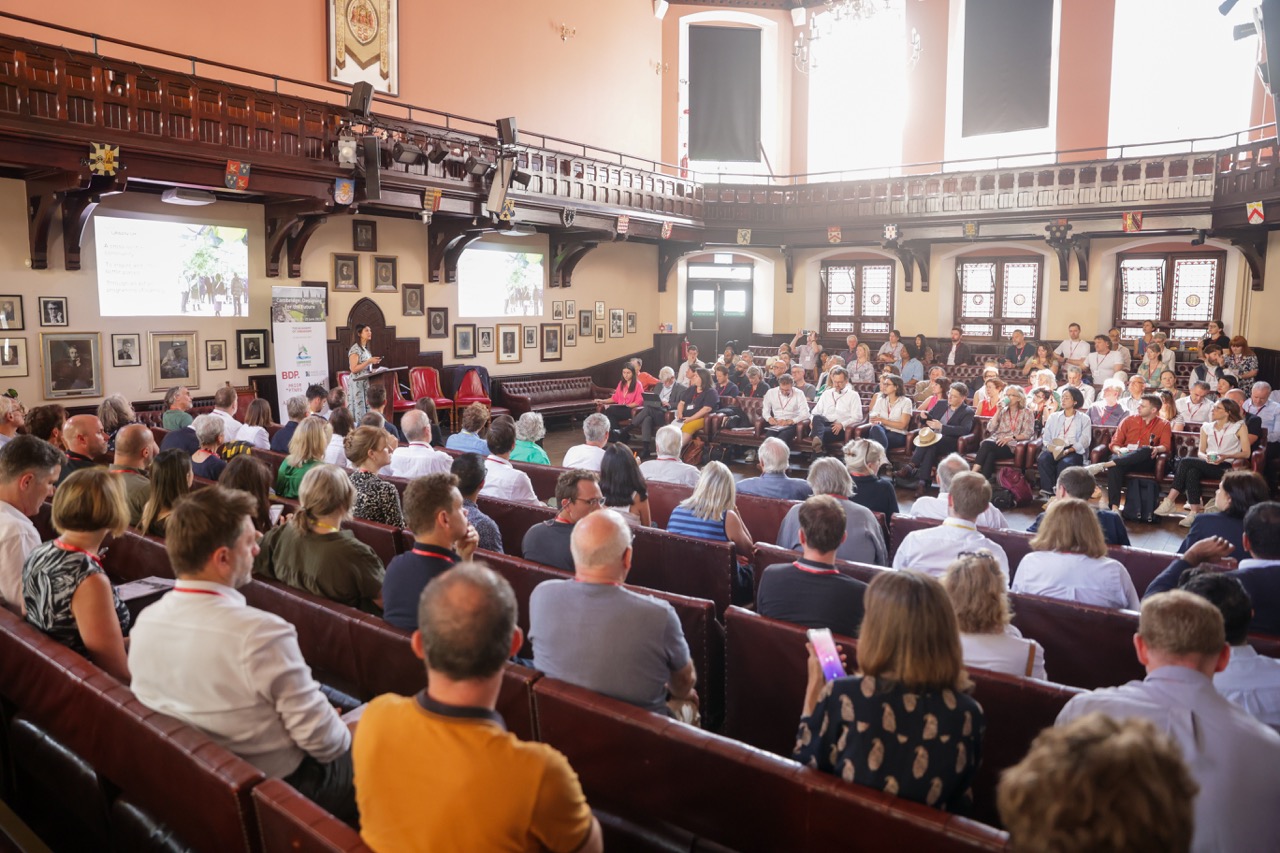Author: Jas Atwal
Introduction
The vibrant city of Cambridge recently played host to a thought-provoking AoU Congress on Designing for the Future, where experts and enthusiasts from around the world gathered to delve into the multifaceted challenges and opportunities shaping the urban landscapes of the future. With its historic charm juxtaposed against cutting-edge innovation, Cambridge provided the ideal backdrop for a discourse that probed the complexities of urban living and planning. The Congress offered a platform for lively discussions, innovative ideas, and a renewed commitment to creating sustainable, people-centred towns and cities.
The Intersection of tradition and innovation
A city renowned for its centuries-old university, Cambridge showcased the dynamic interplay between tradition and innovation throughout the Congress, including the range of venues visited, from the prestigious Cambridge Union Debating Chamber to the Museum of Zoology. The discussions often circled back to the question of how to preserve the rich historic fabric of urban environments while embracing the demands of modern life in a leading technology-driven economy. With eminent speakers drawn from academia, architecture, planning, and innovation, the Congress explored strategies for blending the past and the future.
Consider the context
No two cities or communities are quite the same – so while broad lessons can be learned, a place’s unique context is key to a fuller appreciation. Our host city of Cambridge benefits from the anchor of its Universities and the beauty and majesty of its heritage, but this clearly brings challenges too. We learned of the imperative of growing existing institutional partnerships while also engaging with people across the city and working with them to improve equality and connectivity for all.
Sustainable urban design and planning
One of the central themes of Congress was the urgent need for sustainable urban design and planning in a growth context. Presenters showcased pioneering projects from around the globe that prioritise eco-friendly infrastructure; ambitious social housing solutions – for affordable housing, inter-generational living and housing for the homeless; creating greener spaces, and efficient and accessible transportation systems. The discussions ranged from retrofitting existing cities for sustainability to designing entirely new urban developments with carbon neutrality in mind. The emphasis on applying more sustainable practice highlighted the responsibility of urbanists and policymakers, alongside investors and developers, in helping shape cities that can withstand the challenges of a rapidly changing world.
The Four Cs
A number of speakers talked about the importance of Community, Connectivity, Climate and Character as being essential to ensuring successful placemaking. I would add a fifth, Collaboration. Working together from the outset, with the relevant partners and agencies aligned, is clearly important to create sustainable and resilient communities and places, and requires a mindset that not all organisation leaders may have.
Equity and inclusivity in neighbourhoods, towns and cities
Congress also shed light on the imperative of fostering equity and inclusivity within urban spaces. In an era where urbanisation frequently exacerbates societal divides, speakers discussed strategies for creating cities that are accessible to all. Case studies from various cities offered insights into social housing initiatives, public transportation accessibility and the de-prioritisation of the car, the importance of preserving cultural heritage in marginalised neighbourhoods, and managing rapid growth whilst retaining a sense of identity and belonging. We heard about inaccessibility and the lack of porosity of the green and open spaces, and it became evident that issues of equity are not just a matter of social justice but also essential for creating viable, thriving and resilient urban communities.
The role of science in shaping urbanism
Technology continues to reshape every aspect of our lives, especially, in a place where it is driving the national economy, so it came as no surprise that its influence on urbanism was a recurring topic at Congress. From smart city initiatives to science and data-driven placemaking, speakers explored the ways in which science informed design, influencing connectivity, behaviour, efficiency and quality of life.
Conclusion
The Academy’s Cambridge Congress provided a captivating exploration of the challenges and opportunities that lie ahead in many of our urban futures, as the city is clearly ‘ahead of the curve’. The diverse perspectives shared by speakers and participants alike underscored the complexity of urban issues and the need for collaborative, interdisciplinary approaches to address these. As attendees dispersed from Congress armed with newfound insights, it was evident that the dialogue initiated within Cambridge would ripple outward, shaping the conversations and decisions that will shape our cities of tomorrow.
I’d wish to convey a huge thanks to the local organising committee who went above and beyond to make Cambridge Congress the success it was, alongside the fantastic Academy team that made Congress happen: thank you, Shane Quinn, Connie Dales and Christine Smallwood. I’m looking forward to building further on the Cambridge topics and ideas through our programme of events and knowledge-sharing that continues all year round.
To all the delegates who attended and to our speakers and incredible hosts in Cambridge, thank you once again for being part of it, bringing your energy and passion for truly positive placemaking.






